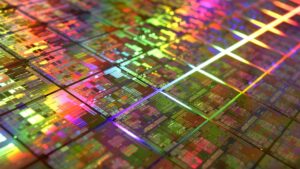ButSpeak.com
News which Matters.

MIT physicists create a ferroelectric transistor with ultrathin material, promising high performance, durability, and potential to transform electronics.
MIT physicists have achieved a groundbreaking advancement in electronics with the creation of a ferroelectric transistor that promises to revolutionize the field. This innovation, led by professors Pablo Jarillo-Herrero and Raymond Ashoori, utilizes an ultrathin ferroelectric material that separates positive and negative charges into distinct layers, enabling unprecedented performance and durability.
The new transistor is built from a ferroelectric material stacked in a parallel configuration, an arrangement that does not occur naturally. When an electric field is applied, the layers slightly slide over each other, altering the positions of boron and nitrogen atoms. This movement dramatically changes the material’s electronic properties, making it highly efficient for switching between positive and negative charges—essentially zeros and ones—at nanosecond speeds. This capability is crucial for high-performance computing and data processing.
In addition to its impressive switching speed, the transistor exhibits remarkable durability. The team reports that the device shows no signs of degradation even after an astounding 100 billion switches. This is a significant improvement over conventional flash memory devices, which often suffer from wear-out issues and require sophisticated methods to distribute read and write operations across the chip.
The ultrathin nature of the transistor, measuring only billionths of a meter in thickness, opens up new possibilities for denser computer memory storage and more energy-efficient transistors. Such advancements could lead to significant improvements in the efficiency and capability of future electronic devices.
Kenji Yasuda, co-first author of the study and now an assistant professor at Cornell University, emphasized the collaborative effort involved in this breakthrough. “We made the material, and together with Ray [Ashoori] and [co-first author] Evan [Zalys-Geller], we measured its characteristics in detail,” Yasuda said. “That was very exciting.”
Despite the immense potential of this new technology, challenges remain before it can be widely adopted. One significant hurdle is the need to grow these materials on a wafer scale to enable mass production. The current production methods for these ferroelectrics are complex and not suitable for large-scale manufacturing.
The research team is also exploring alternative methods to trigger ferroelectricity, such as optical pulses, and testing the limits of the material’s switching capabilities. Ashoori acknowledges the challenges ahead but remains optimistic about the future applications of their work. “There are a few problems. But if you solve them, this material fits in so many ways into potential future electronics. It’s very exciting,” he said.
Reflecting on the significance of their discovery, Jarillo-Herrero expressed his belief in the long-term impact of their work. “When I think of my whole career in physics, this is the work that I think 10 to 20 years from now could change the world,” he concluded.
This breakthrough from MIT physicists represents a significant leap forward in the field of electronics, with the potential to transform how electronic devices are designed and operated in the future.